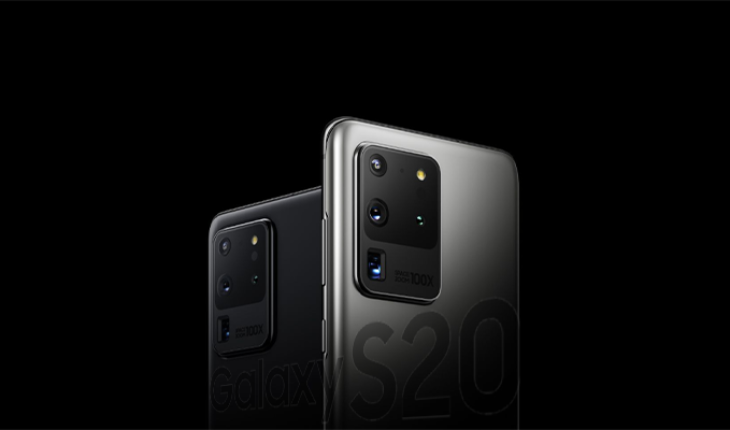The new Galaxy S20 Ultra 5G smartphone, unveiled by Samsung in February, is the South Korean tech giant’s top bet of the year in the field of high-end phones.
Its extensive display, along with a high-resolution camera, exceptionally long zoom and RAM options, undoubtedly make it an attractive model. However, its high price, the highest of the entire Galaxy S family, is a good reason to carefully evaluate all its potential advantages and disadvantages before buying one.
With its 6.9-inch display, 222 gram weight and 8.8-millimeter thickness, Samsung’s brand new cell phone definitely surpasses a good portion of the models available on the market.
And while it has a curved glass design, combined with a thin metal frame to make it easy to hold, its dimensions can be uncomfortable for those who are used to smaller models that easily fit in the pocket.
Unlike the predecessor Galaxy Note 10, whose coating allowed to choose between multiple colors, the S20 Ultra only exists in the black and grey version, so it can give a very sober appearance. Resistance
Both panels of the S20 Ultra include Gorilla Glass 6 crystals, making it able to withstand more shocks and falls. On the front side, a protective adhesive layer is brought from the factory.
On its right side, the cell phone has two physical buttons, one to control the volume and one to lock or unlock the device.
This second button also allows you to open Bixby, Samsung’s smart assistant, with a longer press, while pressing it twice briefly starts the camera. These commands can be customized from your phone settings to open a different program.
Unlike the rest of the Galaxy S family, all three versions of the S20 – the basic model, the S20+ and S20 Ultra – dispense with an analog headphone audio jack. Instead, they come with a USB-C port that can be used to connect AKG hearing aids, including the product.
Like other ancestors, the S20 Ultra has a dual SIM card tray, with capacity for two ‘chips’ in nanoSIM format, simultaneously, or a nanoSIM in combination with a microSD removable memory. In addition, the model supports eSIM virtual cards in case the telco recognizes them.
Perhaps the Dynamic AMOLED 2X display is one of its main strengths, ideally sized to enjoy both videos and video games. It also offers a level of contrast and color sharpness that is impossible to achieve in cheaper models.
In addition, its brightness level, which reaches 1342 nits, makes it especially suitable for use in bright daylight conditions, details the DisplayMate portal.
But the main difference with its predecessors is its double refresh rate, of 120 Hz – not available in resolutions above 1080p for battery saving reasons – which provides exceptionally fluid and natural animations.
The basic version of the S20 Ultra comes with 12GB RAM and 128GB of UFS 3.0 storage, which can be expanded using the microSD removable card, while in some countries it is sold with 16GB of RAM and 512GB of storage.
With the exception of the U.S. and South Korea, where the model comes equipped with a Snapdragon 865 processing unit, in the rest of the world it has an Exynos 990 processor, with noticeably lower performance.
Despite its 108 megapixel sensor, the S20 Ultra’s camera demonstrates extremely poor and disappointing performance, especially in low-light conditions, details the Gizmodo portal, noting that at times its dynamic range loses even against that of cheaper cell phones.
On the other hand, with its quality of 40 megapixels, the front camera is ideal for taking selfies, although after digital processing tends to excessively soften the skin.
The 100X digital zoom, beyond advertising the phone by such a high figure, does not justify such an increase in terms of quality, since from 30x the loss of image resolution is too large, Giozmodo says.
At the time of its launch, the S20 Ultra was officially priced at $1,399, while it is now available in some online stores, such as Amazon, for nearly $200 less.
While the rebate might make it slightly more tempting, it should be remembered that other versions have also been cheaper, such as the Samsung Galaxy S20+ 5G (with the same processor and 8 GB of RAM), which is achieved for less than $1,000, while its 4G version costs around $800.
Thus, it will depend on the tastes and budget of each the decision to acquire the latest Samsung model or do without problematic elements, such as the 100X zoom and the 108 MP camera, to save between 400 and 600 dollars without losing in other features.
translated from Spanish: Things to know about the new Galaxy S20 Ultra if you plan to purchase it
May 6, 2020 |





